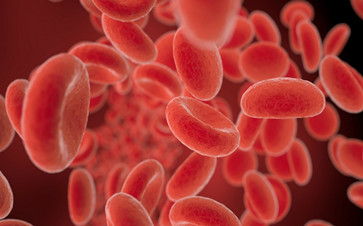Scientists Bio-Print Blood Vessels into Liver Tissue
Time:2017-11-02 From:

In a large collaborative project, international scientists from five countries have laid the foundation to bio-printing a working human liver. Further research in this field could benefit regenerative medicine and help researchers analyze drug toxicity levels in blood samples.
3D and Bio-Printing Become More Important Each Day
3D printing is an ever-growing branch in the printing industry and the medical field is a key contributor to that fact. They even coined the term “bio-printing” to refer to everything that involves printing living organisms. Scientists expect to one day be able to print entire working organs, thus reducing the need for human donors and potentially saving millions of lives. Currently, they are struggling with some very significant issues which they have to overcome first.
In order to print organs, researchers not only have to come up with a way that lets them print cells and tissue that holds up but also, and here comes the problem, blood vessels that keep the tissue alive. Until recently, blood vessels quickly collapsed after being printed. But a team of researchers from Chile, Italy, Korea, Saudi Arabia, and the US has come up with a way to bio-print vascularized liver tissue. They released their findings in a study called “Bioprinted 3D vascularized tissue model for drug toxicity analysis” in the journal Biomicrofluids.
Scientists in California and China Achieve Breakthroughs in Bio-Printing
Earlier this year, scientists from University of California San Diego managed to bio-print a fully functional blood vessel network. By using homemade 3D printers they can print 3D microstructures that emulate biological tissues. With this technology, they are able to print blood vessels in a very short amount of time which is required in order to keep them “alive”.
Chinese scientists reportedly took it even a step further. In a major stem cell biotech breakthrough, a surgery team around Dr. Y James Kang is said to have successfully transplanted bio-printed blood vessels into a rhesus monkey.
“Sacrificial” Bio-Ink Is Essential for 3D-Bio-Printing Blood Vessels
Using a special “sacrificial” bio-ink, more accurate drug testings are made possible with the vascularized liver tissue they bio-printed. Harvard Medical School instructor and researcher Su Ryon Shin explains: “Most drug test models use a two-dimensional (2D) monolayer cell tissue or a 3D tissue, but without this network. Our bodies are actually composed of a 3Dconstruct with a vascular network, not composed of (just) single cells.”
Sacrificial bio-ink is a material that can be washed away. It is essential in printing complex microchannel tubes into tissue, hence vital for bio-printing artificial blood vessels. Shin added:
“We are using human cells, and when we developed this technique we [did so in a way that let us] easily change the cell type, using maybe a patient’s primary cell or their endothelial cells and we can [potentially] create a human-specialized tissue model.”
The Future Is Bright for Bio-Printing
Although scientists are currently working with very basic artificial liver tissues, they could already make some substantial discoveries. For instance they found out that the endothelial layer of the tissue delays drug diffusion response times.
News Source:Blog drupa
Written By drupa Redaktion

